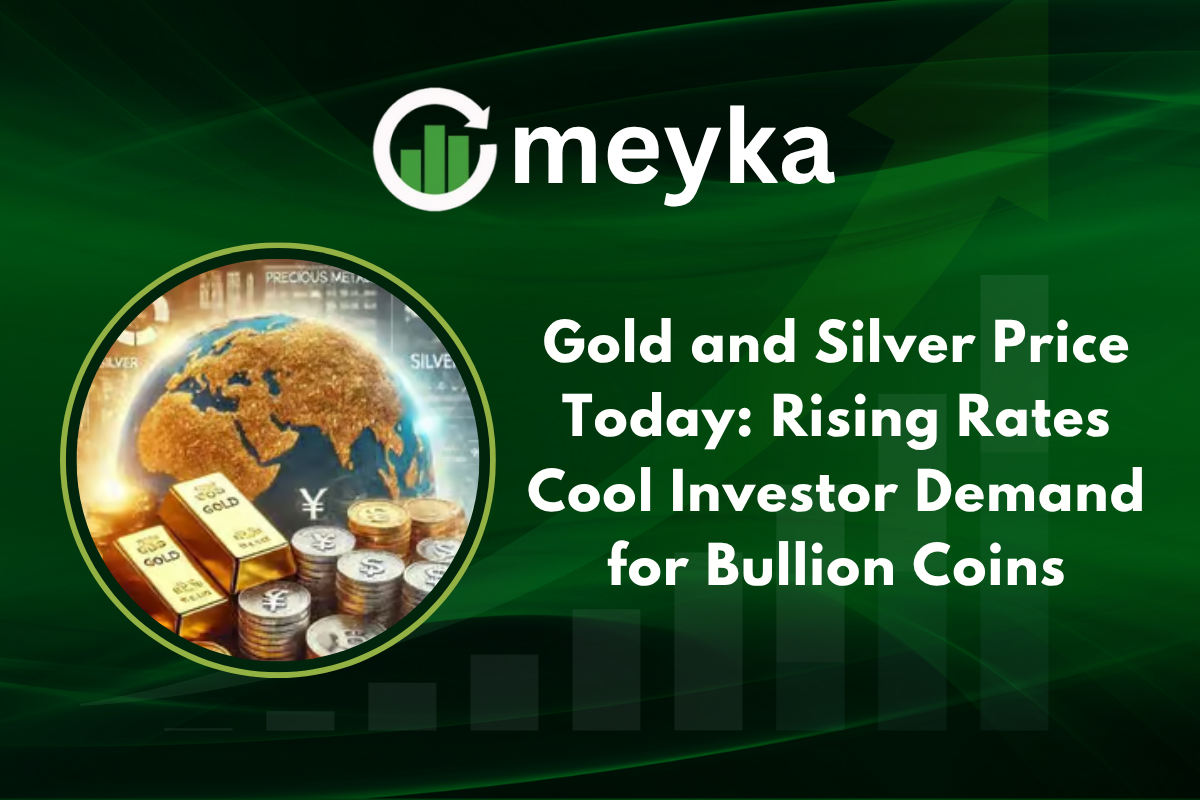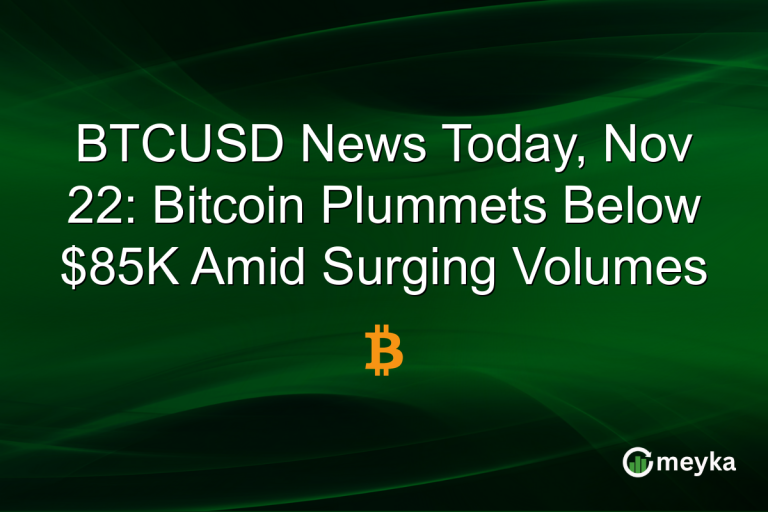Gold and Silver Price Today: Rising Rates Cool Investor Demand for Bullion Coins
The Gold and Silver Price is slipping as rising interest rates and higher Treasury yields dampen appetite for bullion coins. Gold hovered near $2,350 per ounce, while silver traded around $50 to $51, after a burst of retail buying earlier in the week.
Traders and investors are weighing higher yields, the strong dollar, and mixed demand signals from retail and institutions. The result is tighter markets and choppy price action.
Gold and Silver Price: Why Rising Rates Matter
Why do higher rates hurt bullion demand?
Higher interest rates increase the opportunity cost of holding precious metals, because coins and bars do not pay interest. When yields on Treasuries rise, investors often prefer bonds and yield-bearing assets over non-yielding gold and silver.
J.P. Morgan notes that higher yields and a stronger dollar have put pressure on physical demand, and that trend shows up in coin sales and ETF flows.
Why are gold and silver prices falling?
Because the Federal Reserve’s hawkish tone and rising Treasury yields make non-yielding bullion less attractive compared with bonds and high-yield assets.
Gold and Silver Price: retail vs institutional demand
Retail demand for bullion coins cooled this quarter. BullionVault reports that U.S. and European bullion coin sales slowed after a recent inflow spike. Meanwhile, large institutions and funds focus on fixed income yields and selective commodity plays.
The World Gold Council data shows central bank buying remains steady, but retail investment in coins and small bars has softened. That split helps explain why price action is muted even as macro risks linger.
A tweet by @ValueSeeker noted that many traders are waiting for a clearer macro signal before re-entering the gold market, a sentiment echoed by dealer networks tracking coin flows.
Gold and Silver Price: silver’s dramatic moves
Silver is more volatile than gold. GoldSilver.com noted that silver briefly crossed $51, a level not seen since 1980, before retreating. The metal often magnifies moves in gold, and the Economic Times warned that silver could swing about 1.7 times faster than gold in such environments. That makes silver attractive for traders seeking high beta, but risky for conservative bullion buyers.
A social post from @Pheonixisblue called the silver rally “overextended,” cautioning that without fresh demand catalysts from industry or ETFs, the spike could reverse.
Gold and Silver Price: supply, demand, and central bank behavior
Central banks continue to add to reserves. World Gold Council research shows steady central bank purchases, which support the longer-term case for gold as a reserve asset. Yet, that institutional demand does not always translate into immediate retail buying of bullion coins.
The difference between official buying and retail flows helps explain why prices can wobble even with steady macro concerns.
Are central banks still buying gold?
Yes, central bank purchases remain an important support for gold, though they do not fully offset weaker retail coin sales in the short term.
Gold and Silver Price: expert views and bank research
J.P. Morgan sees moderate upside potential if the Fed pauses rate hikes, but warns that continued rate increases would keep bullion under pressure.
Analysts point to a scenario where a rate pause improves gold sentiment and lifts prices, while further hikes push yields higher and weigh on bullion. BullionVault analysts echo this view, showing coin sales dropped as investors chased yield.
A quick social insight from @YunSean1234 highlighted that rising yields have reduced the appeal of precious metals, shifting some demand toward higher-returning assets.
Gold and Silver Price: technical levels to watch
Near term, analysts point to gold support at $2,320 and resistance near $2,390. For silver, support sits around $49.50 with resistance close to $52. If gold holds above support and yields retreat, a recovery to resistance could follow.
If yields keep climbing, expect more pressure and a test of lower supports as retail demand fades. BullionVault suggests monitoring coin sales and ETF flows for confirmation of any price turn.
Is now a good time to buy bullion coins?
Experts recommend waiting for price stability or clearer Fed signals; if you are a long-term holder, phased buying reduces timing risk.
Gold and Silver Price: the role of AI and data tools
Modern analytics are reshaping market reads. AI Stock research tools now track dealer inventory, ETF flows, and macro data to time signals. Asset managers use AI Stock Analysis to model scenarios where yields, dollar strength, and geopolitical shocks interact with bullion demand.
Retail platforms also leverage AI Stock algorithms to send buy alerts when patterns align, though human judgment remains crucial in volatile markets.
Gold and Silver Price: geopolitical and macro influences
Geopolitical tensions and inflation risks remain important upside drivers. A stronger US dollar typically pressures gold and silver, but geopolitical shocks or sudden inflation spikes can reverse trends quickly, prompting safe-haven buying.
A tweet by @matt_horncastle noted that safe-haven buyers are waiting for the next trigger, underlining the latent demand that could re-emerge.
Gold and Silver Price: What Investors Should Watch Next
Investors should watch US Treasury yields, Fed commentary, coin and ETF flows, and central bank purchases. Pay attention to dealer inventory, since lower stock levels can accelerate price moves when demand picks up.
Also monitor industrial demand for silver, as changes there can add fuel to price moves. Short term, expect choppy action; long term, bullion remains a strategic hedge against inflation and geopolitical risk.
Conclusion: Outlook for Gold and Silver Price
The Gold and Silver Price is under pressure as rising rates cool demand for bullion coins. That said, long term fundamentals remain intact thanks to central bank buying and inflation concerns. For traders, silver offers higher volatility and potential upside, while gold acts as a steadier hedge.
Whether prices rebound or consolidate will depend largely on the Fed, yields, and the next macro shock. Investors should balance timing with strategy, and use measured, data backed approaches when adding bullion to portfolios.
FAQ’S
Silver prices are rising today due to strong industrial demand, limited supply, and a weaker U.S. dollar. Investor interest in precious metals as an inflation hedge is also boosting the market.
Analysts say gold could touch $4000 an ounce if inflation remains high and central banks continue to buy aggressively. However, such a move would require major geopolitical or economic shocks.
Experts expect gold to remain between $2,300 and $2,500 per ounce this year, while silver may range from $45 to $55. Both metals could rise further if rate cuts and safe-haven demand strengthen.
Most analysts believe gold prices will stay supported by central bank purchases and inflation worries. J.P. Morgan and the World Gold Council see long-term stability but short-term volatility.
Silver’s rise in 2025 is linked to expanding demand from the solar and electric vehicle sectors, along with reduced mining output. Investors are also treating silver as a high-return alternative to gold.
Silver’s price is skyrocketing because of global industrial use, speculative buying, and concerns over currency devaluation. Market analysts note that silver often moves faster than gold in bullish phases.
Disclaimer
This is for information only, not financial advice. Always do your research.






